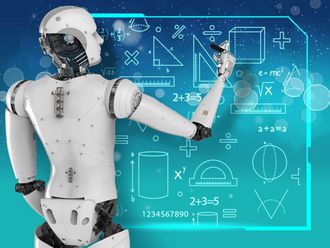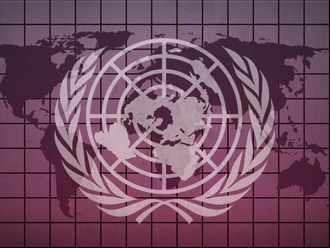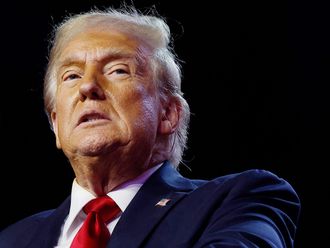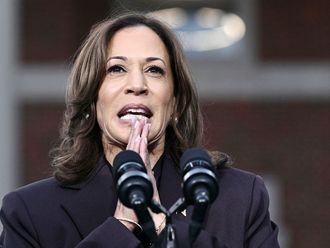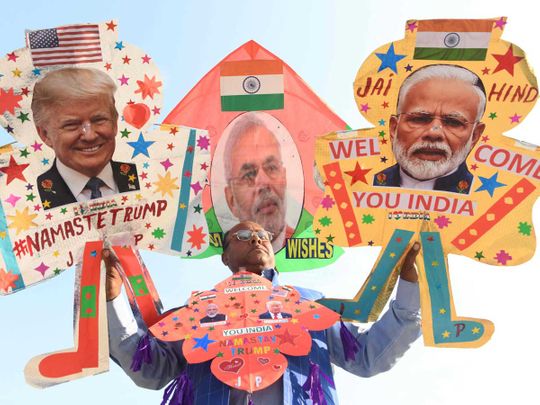
If there’s one thing everyone knows about US President Donald Trump, it’s that he loves a captive audience — the larger and more enthusiastic, the better.
This is one of the many things he has in common with India’s Prime Minister Narendra Modi. This week, both of them will have a chance to indulge their shared passion.
Trump is to visit New Delhi and Modi’s hometown of Ahmedabad — and the US president has said that he expects seven million people to greet him there, although Twitter was swift to note that that would be 80 per cent of the city’s population, which is perhaps unlikely.
What is certain is that Modi and Trump will headline a rally opening Ahmedabad’s new cricket stadium, the world’s largest, in front of 125,000 people.
New Delhi’s policymakers think that, since India’s rise is in the US interest, America must be prepared to give more to India than it will receive in return. But this doesn’t sit easily with Trump’s well-known disdain for America’s “unequal” strategic relationships.
Like most Americans, Trump might be a trifle unsure about what cricket is, but both leaders considered the last rally they attended together, in Houston last year, a roaring success.
Aside from putting the two adulation-hungry politicians in front of crowds, the policy goals of Trump’s trip are unclear.
Some in New Delhi hope that it will restore a bit of dynamism to the relationship, given that India’s stock in Washington is not very high at the moment. Modi’s embrace of Trump has served to alienate many Democrats, including many of the contenders for the party’s presidential nomination.
But even some Republicans have expressed dismay at recent divisive actions by Modi’s government. Recently, Senator Lindsey Graham and India’s foreign minister, Subrahmanyam Jaishankar, had an unusually testy exchange at the Munich Security Conference about Kashmir.
India’s status as a fast-growing large economy often serves to paper over such concerns, but economic growth has cratered recently.

Trade relations have also declined sharply, with Trump saying that “we’re not treated very well by India, but I happen to like Prime Minister Modi a lot.”
This month, the US declared that India would no longer be treated as a developing country when it comes to trading rules, which is very bad news for Indian exporters.
Any hope that a reinvigorated trading relationship would emerge from the visit was dashed by Trump. The president said that he was “saving the big trade deal for later on.”
Multiple recent disappointments have caused these expectations to sour; there is a new and cynical tone to how the two capitals talk about each other. In that context, any visit by an American president is good news, even if nothing comes of it.
In fact, the US Trade Representative recently cancelled a visit to India because nothing was expected from it.
A lot has changed in just a few years. In the years after George W. Bush and Manmohan Singh signed the Indo-US nuclear agreement, which essentially formalised India’s status as a nuclear power, a genuine sense of optimism about bilateral ties prevailed. But multiple recent disappointments have caused these expectations to sour; there is a new and cynical tone to how the two capitals talk about each other. In that context, any visit by an American president is good news, even if nothing comes of it — at least it will keep the conversation going, and hope alive.
We should, in fact, expect at least a little forward movement, if only to satisfy both leaders’ demands for good press. One bit of good news would be if Westinghouse finally got to sell its nuclear reactors to India.
Policymakers in Washington have complained for a decade that Bush’s big bet on India through the nuclear deal has not led to any payoff for US companies; this might at least set those concerns to rest.
Another giant irritant — to Trump at least — has been Indian tariffs on Harley-Davidson motorcycles, which are made in electorally crucial Wisconsin and Pennsylvania.
Indian officials have apparently promised to lower tariffs to “a single digit.”
In spite of severely strained defence budgets, India is also likely to buy two different sorts of military helicopters from the US, at a combined cost of $3.4 billion (Dh12.4 billion). New Delhi at least clearly wants to show its desire for bilateral relations to be restored to some kind of equilibrium.
It has bet big on Trump being the person who makes that happen. That wager may be unwise; Trump has made no secret of his scepticism about trade. In any case, India’s approach to the US has always been predicated on the assumption that the relationship cannot be merely transactional.
New Delhi’s policymakers think that, since India’s rise is in the US interest, America must be prepared to give more to India than it will receive in return. But this doesn’t sit easily with Trump’s well-known disdain for America’s “unequal” strategic relationships. I’m not sure how many stadiums full of cheering crowds it would take for Trump to jettison that principle.
— Bloomberg
Mihir Sharma is a Bloomberg Opinion columnist.
more on the topic
- Trump’s India visit will have echoes for the Middle East
- India, US struggle to bridge trade disputes as Trump visits
- First Howdy Modi and now Namaste Trump: All the world’s a stage …
- 'Bahubali Trump' looks forward for his first visit to India tomorrow.
- ‘America First’ vs ‘Make in India’ as Modi hosts Trump




